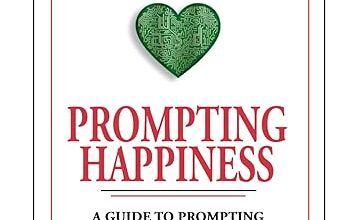Keep Your Spark Alive: How to Balance AI With Your Creativity

In today’s fast-paced digital world, Artificial Intelligence (AI) has begun to reshape many industries, including writing. From assisting with research to grammar checks, AI tools have proven invaluable for writers looking to improve efficiency. However, as more writers embrace AI, a common concern emerges: how can they preserve their unique voice and creativity? The key lies in mastering the balance, using AI as a helpful assistant without allowing it to overshadow the personal touch that makes non-fiction writing resonate.
AI has become a trusted ally for non-fiction writers, helping them streamline tedious tasks. Tools like Grammarly and Hemingway Editor provide quick feedback on grammar, sentence structure, and readability, which allows writers to focus on their core content. AI-driven platforms like ChatGPT can assist with idea generation, outlining, or even researching a wide range of topics. Despite its benefits, it’s important to recognize that AI is only a tool, not a replacement for the creativity and original thought that human writers bring. “The one thing that you have, that nobody else has, is you. Your voice, your mind, your story, your vision,” says Neil Gaiman, an English author of short fiction and comic books, emphasizing the irreplaceable nature of human creativity.
Your unique voice is the most important asset in non-fiction writing; the danger of relying heavily on AI is the risk of losing originality. Whether you’re writing a memoir, a self-help book, or a historical account, your perspective and tone set your work apart. AI may excel at analyzing data or presenting facts, but it cannot replicate the nuanced storytelling, emotional depth, and personal insights that make your work authentic. As New York Times bestselling author Austin Kleon said. “You are what you create, and your work should reflect the unique essence of who you are.”
One of the most critical aspects of balancing AI with your creativity is knowing when to rely on technology and when to trust your instincts. For example, while AI can suggest improvements to sentence structure, it can’t replace the writer’s ability to convey emotion and personal experience. Let’s say you’re writing a personal essay about overcoming a challenge. AI might help you tighten up your prose, but it can’t capture the rawness of your emotions or the authenticity of your story. This human element creates a connection with readers, something AI cannot replicate.
AI can be a fantastic tool for conducting research, but it’s essential to remember that research alone doesn’t make a compelling non-fiction piece. Imagine you’re writing about a historical event. While AI can provide facts and sources, it’s up to you to present them in a compelling narrative. Your interpretation of those facts, that is, how you tell the story, is where your creativity shines through. AI can guide the structure and offer suggestions, but you are the one who brings the material to life in a way that resonates with readers.
To avoid the risk of becoming too dependent on AI, it’s important to establish boundaries. For instance, writers can use AI to check for grammatical errors or help with research, but they should avoid relying on AI to generate entire sections of their work. Define clear roles for AI within your writing process to ensure it supplements rather than replaces your creative input. Relying on AI-generated summaries without infusing your thoughts would undermine the originality of your work.
Brainstorming ideas with AI can also be an excellent way to break through writer’s block, but it should never replace the writer’s imagination. AI can offer several ideas and suggestions, helping writers explore new angles or approaches to a topic. Still, the creative spark must come from the writer who refines and develops these ideas, ensuring the content remains fresh and personal. AI’s role here is to generate possibilities, while the writer is to bring these possibilities to life.
Source: Flickr
One of the most effective ways to use AI while maintaining your style is through editing. AI-powered tools can help polish your writing, correct grammar and enhance readability, but they should never dictate the tone or style. It’s important to hone your creativity during editing even when AI assists in technical improvements. A good balance allows for a well-edited piece that still feels like your work, with your voice shining through.
To keep your creativity flowing and avoid over-reliance on AI, it’s helpful to engage in regular creative exercises. These exercises can include free writing, journaling, or brainstorming, encouraging independent thought, and nurturing your creative instincts. Rather than using AI to come up with every idea or suggestion, challenge yourself to think outside the box and generate original content. Setting aside time for brainstorming or freewriting before using AI can help you stay connected to your original ideas, freewriting exercises and creative thinking can help you stay grounded in your unique voice.
Writers often feel pressure to use AI when deadlines loom, but creativity thrives when writers have the time and freedom to think and explore ideas without the rush of looming deadlines or reliance on technology. While AI can suggest ways to improve clarity or remove redundancy, you need to control the pacing and emotional beats of your writing. Before turning to AI to help structure an article on sustainable living, try writing down your thoughts and perspectives. This way, when you use AI to refine the structure, it will reflect your style.
As AI becomes more sophisticated, writers face even greater challenges to keep their originality. The growing availability of AI tools might make it tempting to let these technologies take over large parts of the writing process. Even so, successful non-fiction writing will always need the human element, the insights, creativity, and aspects of writing, like fact-checking or gathering research. It’s important to remain vigilant about the authenticity of the information. Embracing these developments while maintaining control over the piece will allow writers to thrive in the changing landscape of non-fiction.
Source: Pickpik
AI technology will no doubt shape the future of non-fiction writing. As AI tools are mingled into the writing process, writers will continue to explore ways to use these technologies while preserving their voices. Yet, writers must remember the core of non-fiction writing: the human experience, personal insights, and emotional connections that make the work meaningful. By embracing AI as an assistant, rather than a replacement, writers can continue to produce work that speaks to readers deeply and authentically.
Practical tips for using AI in your writing make it easier to maintain that crucial balance. Set clear writing goals that allow AI to handle certain tasks while you remain focused on the creative aspects. Use AI for specific functions like research, editing, or idea generation, but don’t let it take over the entire process. By staying curious and continually honing your creative skills, you can harness AI’s power without sacrificing the originality that makes your work stand out.
Steve Jobs once said, “Innovation distinguishes between a leader and a follower.” In the world of non-fiction writing, you remain the leader, guiding your creativity with the help of AI. The key to thriving as a non-fiction writer in the age of AI is striking the right balance. AI can be a powerful tool for efficiency, organization, and polishing your work, but it should never overshadow your insights and voice. As long as you prioritize your creativity and originality, AI remains a helpful companion, not a crutch.
Achieving success in non-fiction writing today lies in finding harmony between AI and personal creativity. Writers should embrace AI benefits from efficiency to improved quality, while remaining grounded in their voices. By setting boundaries, using AI wisely, and trusting your creative instincts, you can produce work that resonates with authenticity and originality. As you explore the possibilities of AI, remember that your spark—the essence of what makes your writing unique—will always be the most valuable tool at your disposal.



